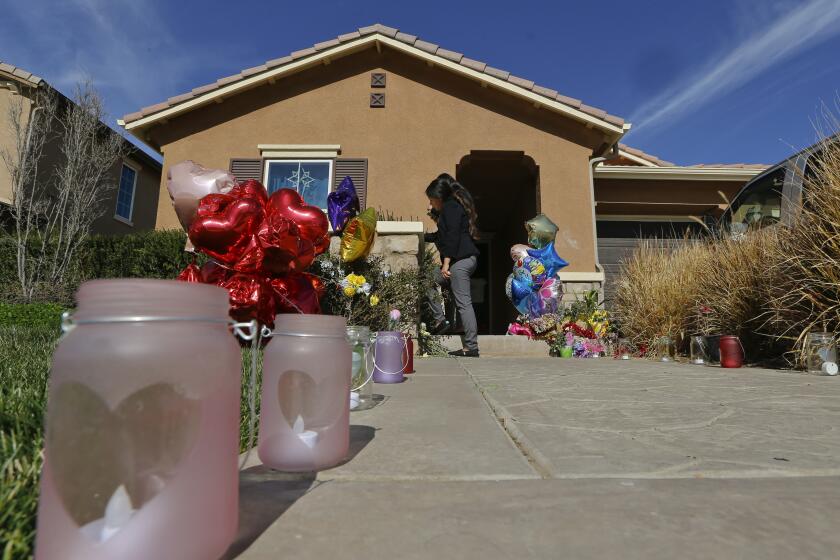A community’s urban journey
I was raised an anti-Communist, a child of the Cold War. A friend broke off a teenage correspondence when I criticized her for demonstrating against the execution of the Rosenbergs, convicted spies for the Soviet Union. When I was a young reporter, Dorothy Healey, a famed local Communist Party leader, told me her recollections of former Mayor Sam Yorty’s party ties. I didn’t trust her enough to use them.
I got smarter -- or at least less stupid -- when I became friends in the 1970s with Sam Kushner, the labor reporter for the People’s World, the Communist Party newspaper. Sam and I had many lunches. He loved a good lunch at the expense of the anti-union Chandler family, which then owned The Times. He told me of picket lines and demonstrations. One day, I met him at his office in a dingy building downtown, where a few elderly men toiled away at desks. “Welcome,” Sam said, “to the international Communist conspiracy.” I saw him as a social reformer rather than a Russian spy. He taught me that the party was more complex than the organization once vilified by Sen. Joe McCarthy.
These memories were revived by an exceptional book, “L.A. City Limits: African American Los Angeles From the Great Depression to the Present,” by Josh Sides, an assistant professor of history at Cal Poly Pomona. He mixes pioneering research with good writing, sharp analysis and the moving stories of everyday people. His work deserves a place on the bookshelves of all serious students of Los Angeles and the rest of urban California.
Sides tells the story of the Los Angeles black community from the late 19th century, when Pullman porters settled near the railroad yards, to the more familiar time after the 1992 riots. He recalls the years of segregation and bigotry in a city settled by white Southerners and Midwesterners who imposed their narrow view of life on what had been a rowdy frontier town. Segregation was practiced in parks, restaurants and other recreational facilities. Neighborhoods were segregated by racially restrictive covenants.
Sides explains how such segregation, particularly in public places, was enforced by the Los Angeles Police Department, “many of whose officers considered it part of their duties to reinforce the racial barriers of urban space. This confrontation would prove to be one of the most explosive in postwar Los Angeles.” His words are a timely reminder to those who believe that civil rights history in Los Angeles began with the Rodney King beating. It is a much longer history to most African Americans, one handed down from generation to generation, a part of familial lore, with great-grandparents and young people telling the same kinds of stories of injustice, discrimination and police brutality.
I was especially drawn to Sides’ research into the Communist Party’s relationship with civil rights in Los Angeles during and just after World War II. The black population of the city was growing fast, as people moved from the South in the Great Migration, prompted by the availability of jobs in the formerly segregated aircraft and shipbuilding industries, which were desperate for workers during the war. But banks, markets and the streetcar line still refused to hire blacks, as did many other employers. Housing segregation kept African Americans in increasingly crowded neighborhoods around Central Avenue. Protests grew in intensity and frequency.
It was a time when the NAACP was heavily criticized for timidity. The organization, complained the California Eagle, an African American newspaper, was “more noted for its hesitancy than its militancy.” When Herman Burns, a young black man, was clubbed to death by Los Angeles police in 1948, the Civil Rights Congress, a Communist Party front, stepped into the void and organized the “Justice for Burns Citizens Committee.” The Burns campaign, says Sides, “heralded the emergence of the Communist Party as an important political force in black Los Angeles. During the 1940s and early 1950s, many African Americans in the city came to view the Communist Party as the most effective and expedient vehicle for civil rights activism.” At one time, African Americans constituted about 10% of Los Angeles Communist Party membership. Party membership in California was second only to that of New York.
As I learned from Kushner, the party was not a monolithic body in lock step with the Kremlin. As is the case in most organizations, there were the bosses, who followed the Stalinist line, and the troops in the field, who often ignored directives from on high and had their own agendas. Black party members in Los Angeles, Sides writes, “were not, for the most part, impressed with the ‘party line’ on the perils of global capitalism. Most black members sought out the party because they or someone they knew had been abused by the LAPD, and no one else seemed to care; or because their local supermarket refused to hire African Americans, and no one else was picketing; or because when a cross burned on a black family’s lawn in the middle of the night, the Communists were the first ones to arrive and demand justice.”
Clearly, the Communists recruited African Americans to build up party membership; party bosses were more interested in promoting the foreign policy of the Soviet Union than black civil rights. But Sides shows that on the street level, the party workers carved out their own path. “The party was always trying to keep us in line,” Watts resident O’Neil Cannon told Sides, “because in Watts we had a different breed of people.... [M]ost of us black folks down in Watts, down our way, came in on the race question. We were talking about trying to get jobs.”
By the early 1950s, the American party was in decline, weakened by the Korean War, the party’s rigid Stalinist dictates and the intense pressure of congressional committees, the FBI and liberal anti-Communist organizations such as the American Civil Liberties Union, the NAACP, labor unions and Americans for Democratic Action. The NAACP and activist churches became leaders of the Los Angeles civil rights movement, which entered a new, and ultimately more effective, stage.
Given my own history, I was fascinated by the little-heralded Communist role. But there is much more to Sides’ book: He follows L.A.’s African American community through the Depression, through wars, riots and battles against bigotry, documenting its slow climb from menial work to the professions and from the segregation of Central Avenue toward the suburban dream. Business people, ministers, lawyers, union members, neighborhood leaders, politicians, teachers, schoolchildren -- all are his heroes. It is a great Los Angeles story, an American story, and Sides has done a fine job of telling it. *
More to Read
Sign up for Essential California
The most important California stories and recommendations in your inbox every morning.
You may occasionally receive promotional content from the Los Angeles Times.










